This Arsenal victory wasn't just another win against an inconsistent Manchester City.
It was a masterclass in tactical exploitation that showed the fundamental flaws in Pep Guardiola's current system, both in and out of possession.
HOW ARSENAL WALKED CITY INTO THEIR TRAP
So often, we have seen Arsenal build up in a back three with either the leftback or the rightback tucking in alongside the centrebacks.
But in this encounter, there was none of that. Instead, Timber played as a traditional fullback while Lewis-Skelly inverted into the midfield alongside Partey.
This opened up a world of possibilities for the Gunners.
Partey and Lewis-Skelly were positionally stable and did not drift too much from their pivot positions. However, this stable double pivot enabled Declan Rice and Martin Odegaard to be incredibly flexible and shine for the Gunners.
And they caused City all sorts of problems.
City when high up used a hybrid pressing system (i.e. Zonal in some parts of the pitch, man-to-man in other parts). The man-oriented markers were clear :
- Kovacic on Odegaard
- Bernardo Silva on Rice
- Marmoush covering Partey
- Foden on Lewis-Skelly
Arsenal ripped this system apart.
Man-marking dies by movement.
One of the most effective ways to break a man-oriented shape is through constant movement and rotation, and Arsenal put on a clinic in this regard. In situations where Foden’s central presence with Lewis-Skelly meant both pivots were occupied, Odegaard was happy to drop deep, extremely deep to become the third progression option that the centrebacks could easily find.
This caused headaches for Kovacic.
He could follow, sure, but that would leave a massive gap in the midfield region as he was on paper meant to be the most defence-minded pivot.
This wouldn’t be helped by the fact that with both Timber and Martinelli positioned high up the pitch, or the dropping Havertz would be primed to move into the region to receive a progressive pass.
But at the same time if Kovacic hung back, now Arsenal had plenty of room to progress in a controlled manner through Odegaard.
But that was only the beginning of the issues because the real genius of Arteta’s game plan involved two Englishmen; Lewis-Skelly and Rice.
Arteta’s previous experience with Bernardo Silva (or more likely a simple tactical observation) would have shown that the Portuguese is a voracious presser. If Bernardo is in the mood to press, he will follow the man everywhere on the pitch.
And this is usually a massive strength.
But Arsenal turned this strength into a weakness.
Lewis-Skelly inverted taking Foden with him and Declan Rice would then move into the left back zone.
Bernardo would instantly follow Rice meaning that now Kovacic was completely isolated in the midfield with plenty of room for Arsenal to potentially take advantage of. Again this would make it even less likely that Kovacic would follow Odegaard deep as that would leave the midfield completely isolated.
Surprisingly, despite the mammoth win, for the most part, Arsenal did not take advantage when they were able to create these massive gaps in the midfield.
Except for one occasion.
Man-oriented systems are extremely difficult for defensive sides to pull off, as they have to follow the rotations of the attacking players carefully. One false move and the opponent is free. That’s exactly what happens for Lewis-Skelly’s goal.
Foden has moved to pick up Rice at left back which was usually Bernardo’s role. With effective communication, Bernardo should have then picked up Lewis-Skelly (Foden’s old man), or Marmoush could have stepped away from Partey. But neither happened, meaning Lewis-Skelly receives in space between the lines and is able to finish.
DEFENCE IS THE BEST FORM OF ATTACK
Despite scoring five, Arsenal’s best work was done out of possession and they did have slightly less of the ball.
Unlike Arsenal, City stuck to their back three in the build-up but it was… different from what we usually see.
Typically the back three is fairly narrow even in the build-up.
But in this encounter Pep wanted his back three to be as wide as possible.
Why was that?
Well, Pep wanted to create a midfield overload.
Pep is aware that Arsenal defend in a compact 4-4-2, so if he had built in a narrow back three, it would mean for the most part, Odegaard and Havertz could handle all of the pressing, allowing the midfield four to remain deep and narrow helping to stop the overload in the midfield.
But by having the LCB and RCB so wide, it forces it to be the Arsenal wingers who are engaging defensively manipulating Arsenal to shift into somewhat of a 4-2-4 in the defensive phase.
With City shifting into a midfield diamond, it would exaggerate the 3 vs 2 advantage in the midfielder region as the Arsenal wingers are not there to add numbers defensively.
But in this match, the weakness of this shape from City were far greater than the strengths.
Having such big distances between the centrebacks and the pivots means that each player is extremely isolated.
So the closest supporting player is a way off, meaning each player is primed to be pressed aggressively, making life easier for Arsenal defensively.
Isolated defenders die alone
And of course, Arsenal were extremely shrewd defensively, sitting deep when needed but when they spotted the opportunity to press, they were ruthless in taking advantage of these isolations.
This of course is best exemplified in the opening goal.
ATTACK IS THE WORST FORM OF DEFENCE
But if Arsenal’s defence set them up to be lethal offensively, City’s offence set them up to be slaughtered defensively.
This is because Pep decided to take some calculated gambles, gambles which at times threatened to pay off.
Arsenal were rock-solid defensively, but City often looked most dangerous when they were able to bypass the Arsenal front two and find Kovacic.
This would allow the Croatian to drive forward with the ball looking to now make it a 4v2 against Partey and Rice. Scenarios such as this would threaten to pull apart the solid Arsenal defensive shape.
But as a result of wanting to simulate this situation more often, Kovacic found himself pushing higher and higher to get goalside of the Arsenal front two.
This also naturally meant that there was no longer a shield in front of the defence (more on this in a moment).
Additionally, early in the encounter, the City shape was clear in attack, a 3-4-3 diamond with Nunes and Savinho providing the width.
But as Arsenal were defending narrowly nullifying the central overload City had been hoping for, City looked to increase the central overload.
This was by moving an extra man central as Savinho had a more roaming role as the game progressed, with Gvardiol now providing the width.
In fairness, this did lead to the City goal, with Savinho using his added freedom to be the free runner into the box and provide Haaland the assist.
However, this offensive shape is a disaster defensively as it leaves only two centrebacks defensively with almost no shield in front of them.
And Arsenal took full advantage for their fourth goal hitting hard on the transition.
A dominant win from Arsenal.
It is a strange season where beating City is not a gauge for how well a team is performing as it seems most half-organised sides will come up on top against the blues at present.
But what are your thoughts on this match?
As always not everything could be covered so drop anything else in the comments which I will be sure to read.
Tactical Program Update:
Great news!
My Tactical Program is nearly complete. Everything I know about breaking down the beautiful game, delivered straight to you.
To ensure it’s comprehensive, mention anything you want covered here (should take <20s) and join the waitlist to be first in when it drops.





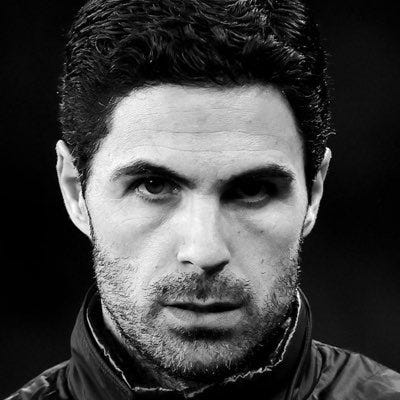

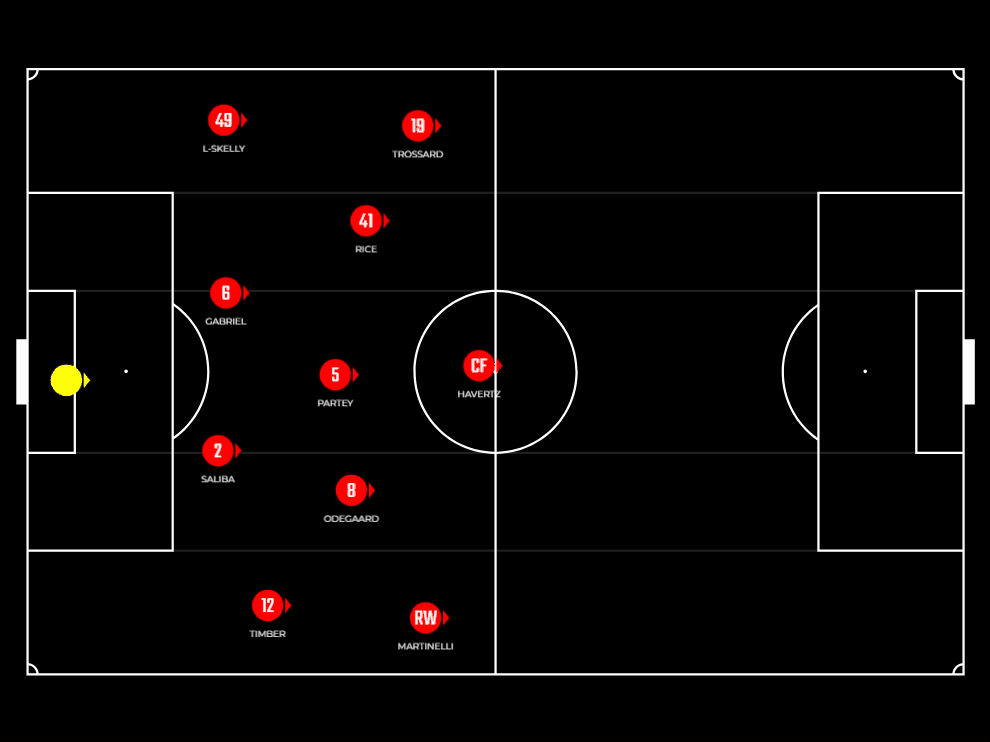


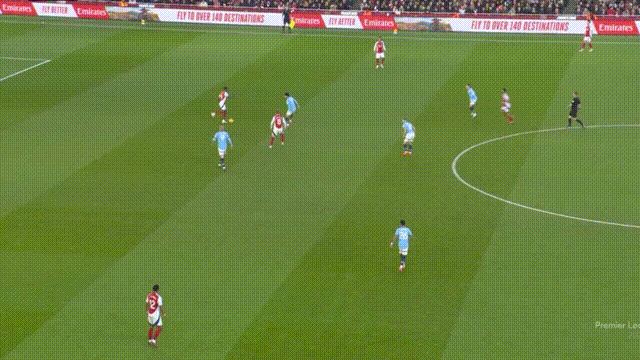
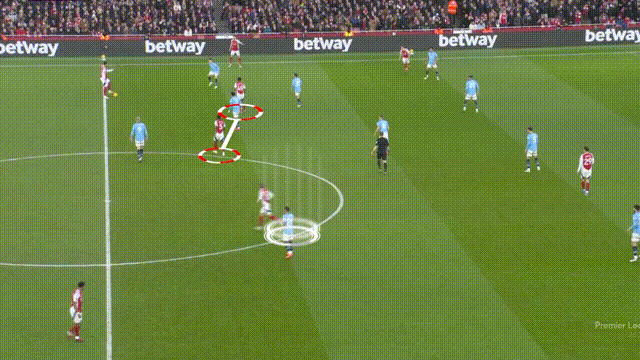
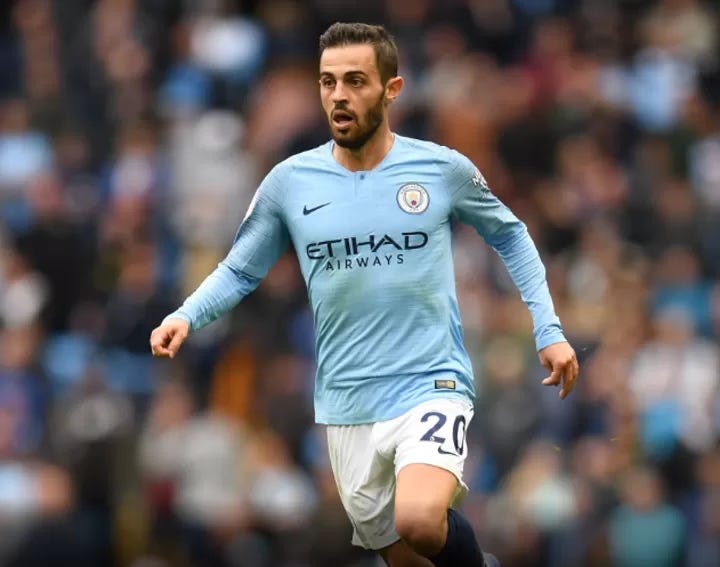

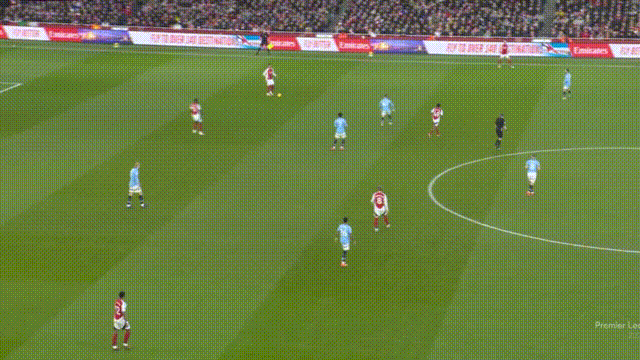
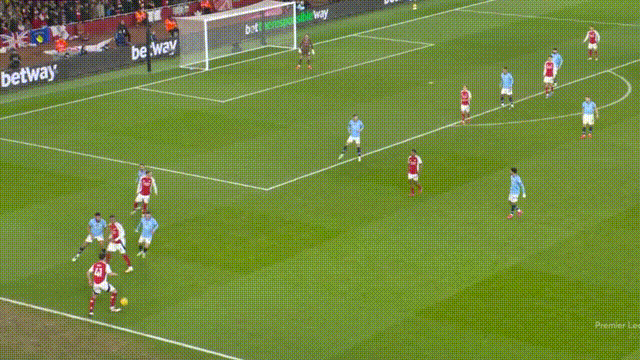
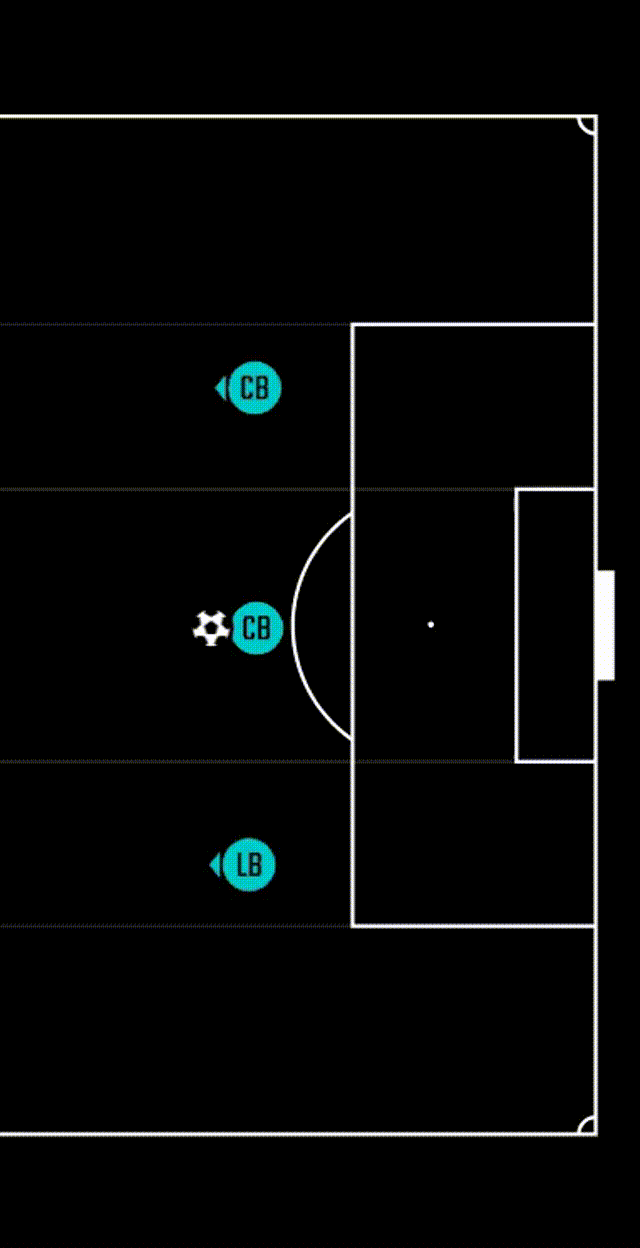



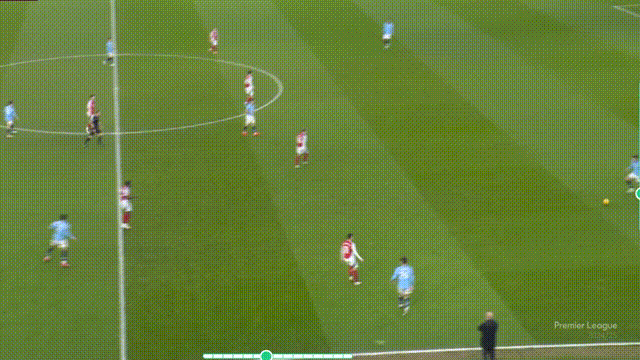


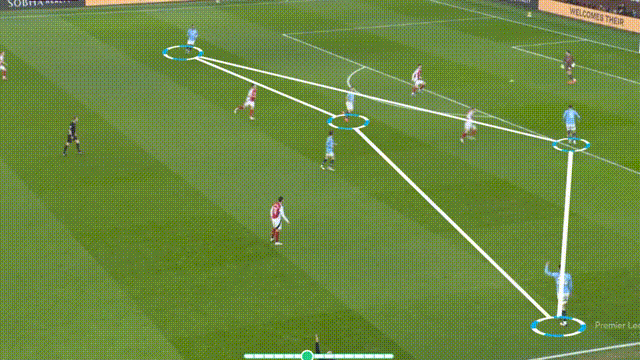
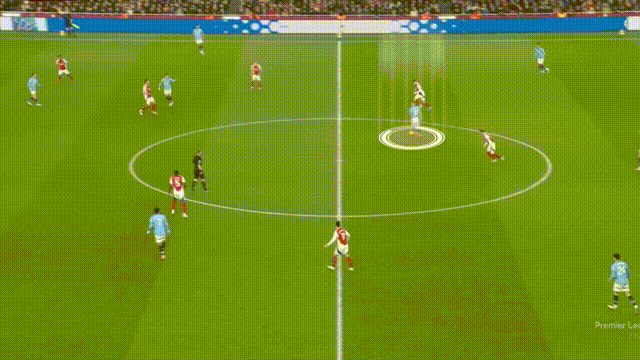

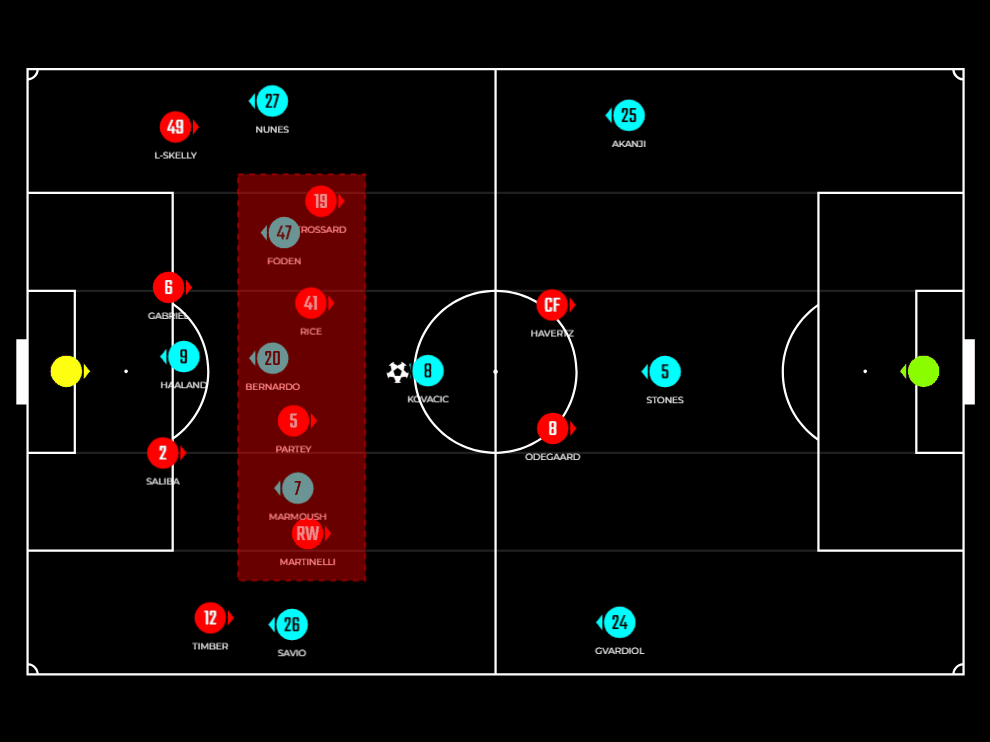
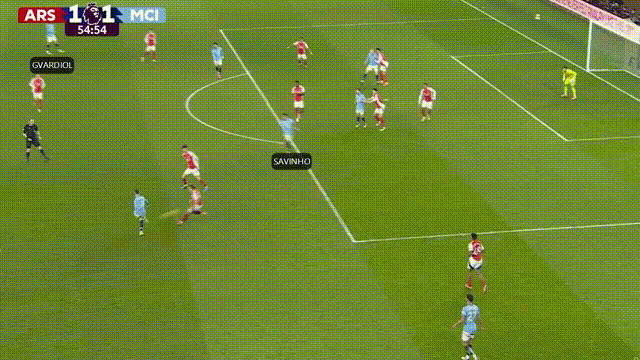

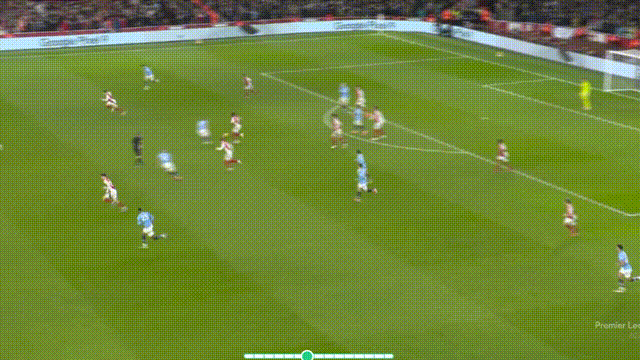
Pep should have sat back and hit arsenal on the counter, just like how Aston villa did....there's more quality upfront ,he should have focused more on the defensive aspect of the game.
City's defensive shape is so complex that I was wondering how to view and interpret it and you provided a clear answer.
It was a hybrid defense system.
Your tactical analysis is clear and straight to the point.
All your videos inspire me so much
I need to analyze, study, and think to reach the same level of skill as you.